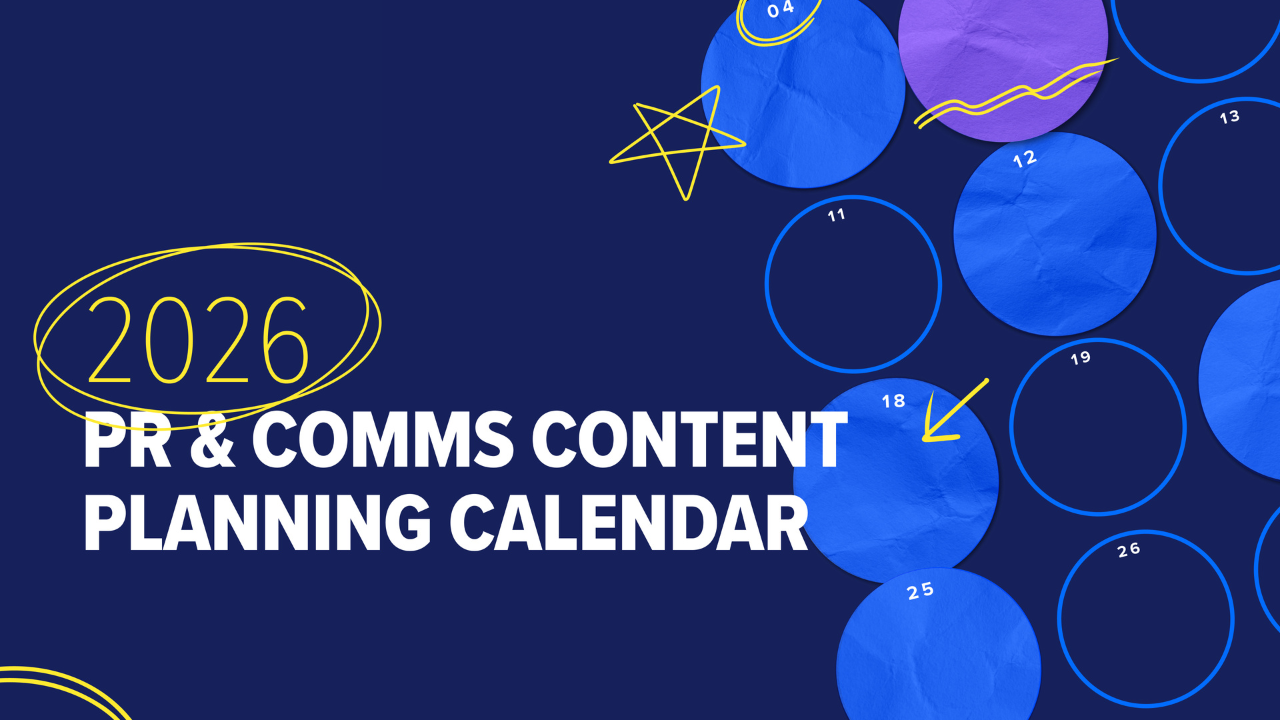Summer is almost here, and while many people are focused on their “summer body” challenges, public relations professionals like you are prioritizing a different kind of challenge: Effectively pitching to fitness and health reporters. While others try building a workout routine or finding the perfect protein shake, you probably want to know how to write a PR pitch that gets fitness and health reporters to cover your stories during this peak seasonal interest.
These exclusive insights from the soon-to-be-released 2025 State of the Media report can help. We surveyed over 400 fitness and health reporters to get all the intel you need to increase your chances of seeing your story published.
If your summer plans include securing coverage, upping your PR pitching game, and building stronger relationships with fitness and health reporters, this article’s for you.
Inside the Minds of Fitness & Health Reporters
Want to build a solid relationship with fitness and health reporters? The first step is understanding what they find valuable. Knowing how you can provide value can help you communicate in a more meaningful way by giving journalists exactly what they look for.
According to our survey of fitness and health reporters, when asked about the ways in which PR professionals can provide value, their top three preferences were closely ranked. The data shows that if you connect them with relevant sources, give them access to key people or places, or provide a relevant story idea, you are significantly more likely to get your story covered.
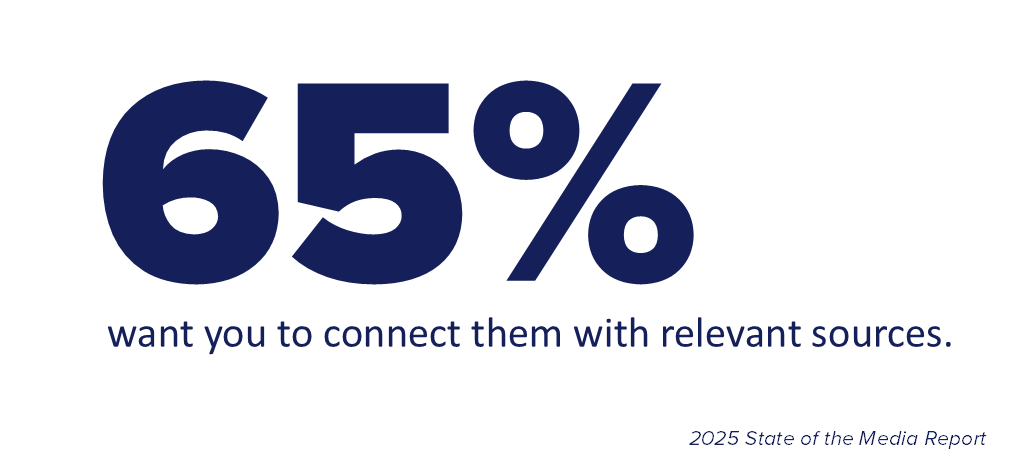 In your experience, what are some of the ways PR professionals provide value?
In your experience, what are some of the ways PR professionals provide value?
- 65% - They connect me with relevant sources
- 60% - They facilitate access to key people or places
- 51% - They provide relevant story ideas
- 45% - They give me access to exclusive news or content
Social media now plays a huge role in the daily lives of journalists in the fitness and health sector: Only 3% of them don’t use it for work-related purposes. The rest, however, count on social media to publish or promote their content, interact with their audiences, and stay on top breaking news.
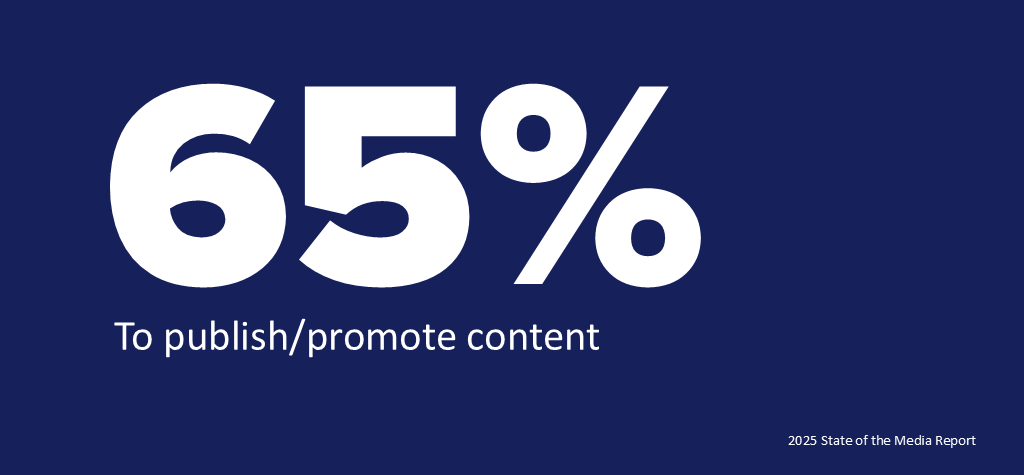 In the last year, have you used social media for any of the following work-related reasons?
In the last year, have you used social media for any of the following work-related reasons?
- 65% - To publish/promote content
- 57% - To interact with my audience
- 52% - To stay on top of breaking news
- 52% - To pick up on trending topics
Although so many journalists use social media consistently, don’t fall into the trap of assuming that they want to receive pitches through this medium: Only 5% of fitness and health reporters want you to send your pitch via social media/DM. The best way to pitch is still via email (97%).
What Fitness & Health Reporters Want From Public Relations Professionals
Imagine you just sent an email to a fitness and health journalist. But did you send them what they want? You don’t have to overthink PR pitching anymore – we specifically asked them what kind of content they want to get from you. Similar to results from previous years, and therefore as expected, news announcements or press releases is the No.1 choice (75%) but exclusives for stories (59%) and original research reports (57%) are also highly coveted.
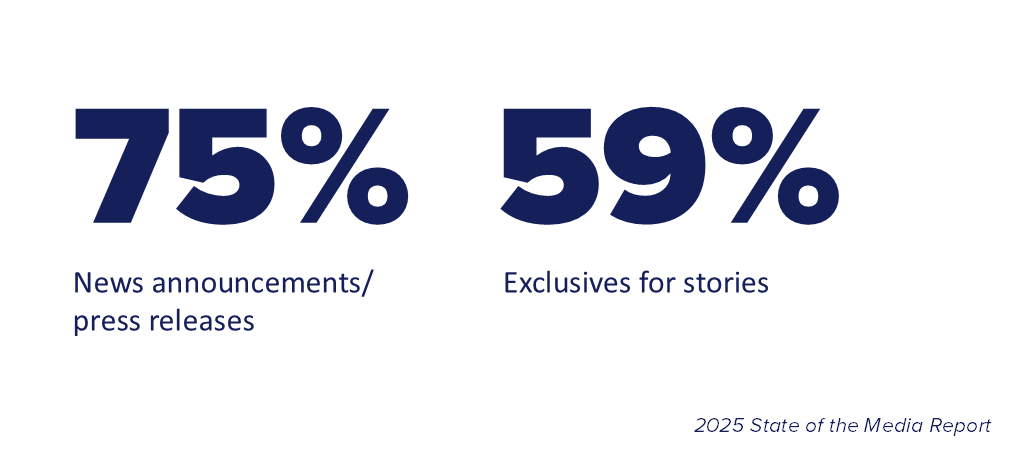 What kind of content or information do you most want to receive from public relations professionals?
What kind of content or information do you most want to receive from public relations professionals?
- 75% - News announcements/press releases
- 59% - Exclusives for stories
- 57% - Original research reports (trends, market data, etc.)
- 48% - Access to events
You can “add a little bit of spice” to your pitches by including multimedia or data elements that journalists can use when publishing your story – but which ones? Enhance your outreach by adding images (69%), web polls or surveys (32%), and data visualization or infographics (26%).
What NOT to Do When Pitching Fitness & Health Reporters
Now that you know what journalists in this industry want from you, it’s also important to steer clear of potential faux pas that could get you on their “don’t call” list.
For 79% of our respondents, spamming them with irrelevant pitches would make them avoid you. You should also make sure that your pitches don’t sound like an attempt to advertise something (get the best tips for PR writing in this tip sheet) and don’t include incorrect or unsourced information.
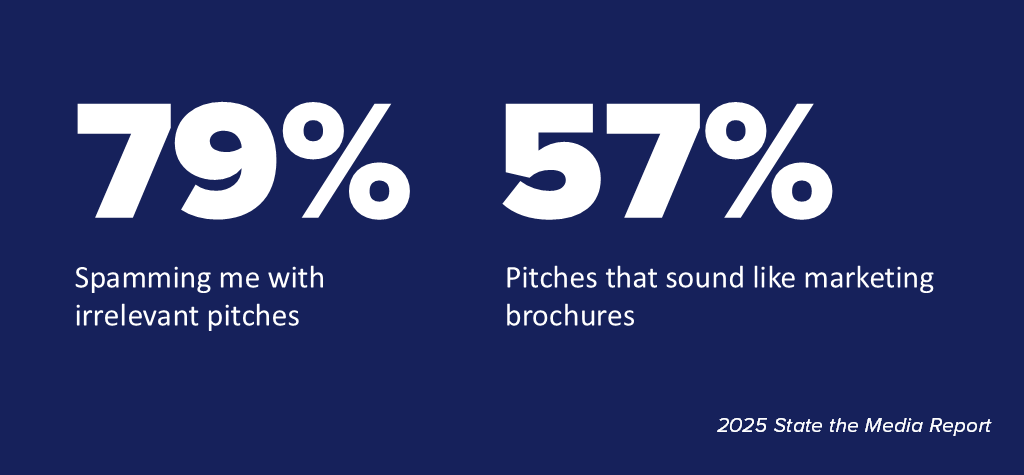 What would make you block a PR professional or put them on your “don’t call” list?
What would make you block a PR professional or put them on your “don’t call” list?
- 79% - Spamming me with irrelevant pitches
- 57% - Pitches that sound like marketing brochures
- 57% - Providing inaccurate or unsourced information
- 55% - Following up with me repeatedly
Sent a pitch and never got a response? Don’t push it – that might make a journalist block you and you’ll lose a potential relationship. For 63% of them, following up once is more than enough, while 31% want you to never follow up regarding a pitch you sent.
Why Fitness & Health Reporters Reject a Pitch
Besides knowing what makes a pitch stand out, it’s also helpful to look at the other side of the coin: What makes journalists reject a pitch? When you know what turns journalists off, you can do the opposite to win favor with them.
Eighty-eight percent of health and fitness reporters say they reject pitches that are irrelevant to their audience or beat, which underscores the importance of doing your research before reaching out to ensure your story makes sense for their audience. See more of their reasons for rejecting pitches below, and use the intel to craft more effective outreach moving forward.
What are the biggest reasons you reject a pitch?
- 88% - They aren’t relevant to my audience or beat
- 72% - They are too promotional and lack substance
- 41% - They lack a clear or compelling hook
- 36% - They aren’t compelling enough
To maximize your chances of getting earned media coverage, we also asked them what makes an ideal pitch (in addition to being relevant): Fifty-six percent of our respondents would like you to include compelling data and statistics, followed closely by contact information (52%) and a unique story angle or point of view (51%).
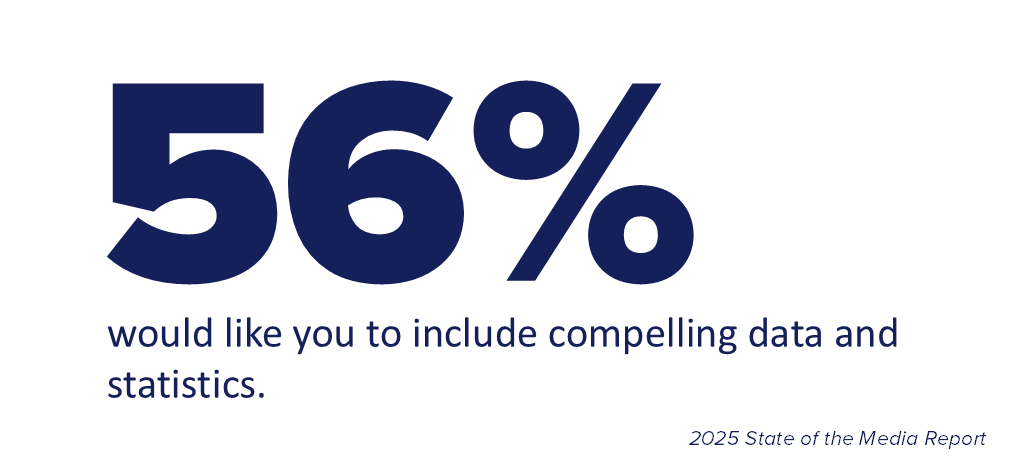
How to Identify the Right Journalists for Your Health & Fitness Pitch
Got a story for this industry? Keep in mind that relevance is crucial, therefore finding the right journalists and pitching them stories that their audiences would appreciate is also important. You could start by putting together a media list (or update it if you already have one that didn’t bring you many connections), but the fastest, easiest, and most effective way to build a quality outreach list is by using a media database.
Using a database like CisionOne Outreach, for example, you can search the top outlets and journalists covering the health and fitness sector, and quickly identify journalists who have previously covered your company (or client), industry or competitors. You can also discover valuable intel like other outlets they work for, recently published work, and their social media activity.
Once you’ve built a robust media list of fitness and health reporters and media influencers, apply all the insights above to enhance your outreach strategy and improve your earned media coverage.
Want more data-driven advice? Keep an eye out for the 2025 State of the Media Report. In the meantime, our tip sheet, How to Become Journalists’ Favorite PR Pro, explores top ways of making a good first impression with media professionals and building strong relationships with them.
Most Recent Posts
Cision Resources
-
E-books and Guides
Comprehensive how-to guides on strategy and tactics
-
Case Studies
What are other brands doing – and how can we learn from them?
About Bianca Parvu
Bianca is the Junior Copywriter at Cision, specializing in tech industry storytelling. She crafts engaging content across digital channels, from thought leadership to email marketing campaigns.
Learn More. Do More. demo new
PR Tips, Case Studies, and Product Updates
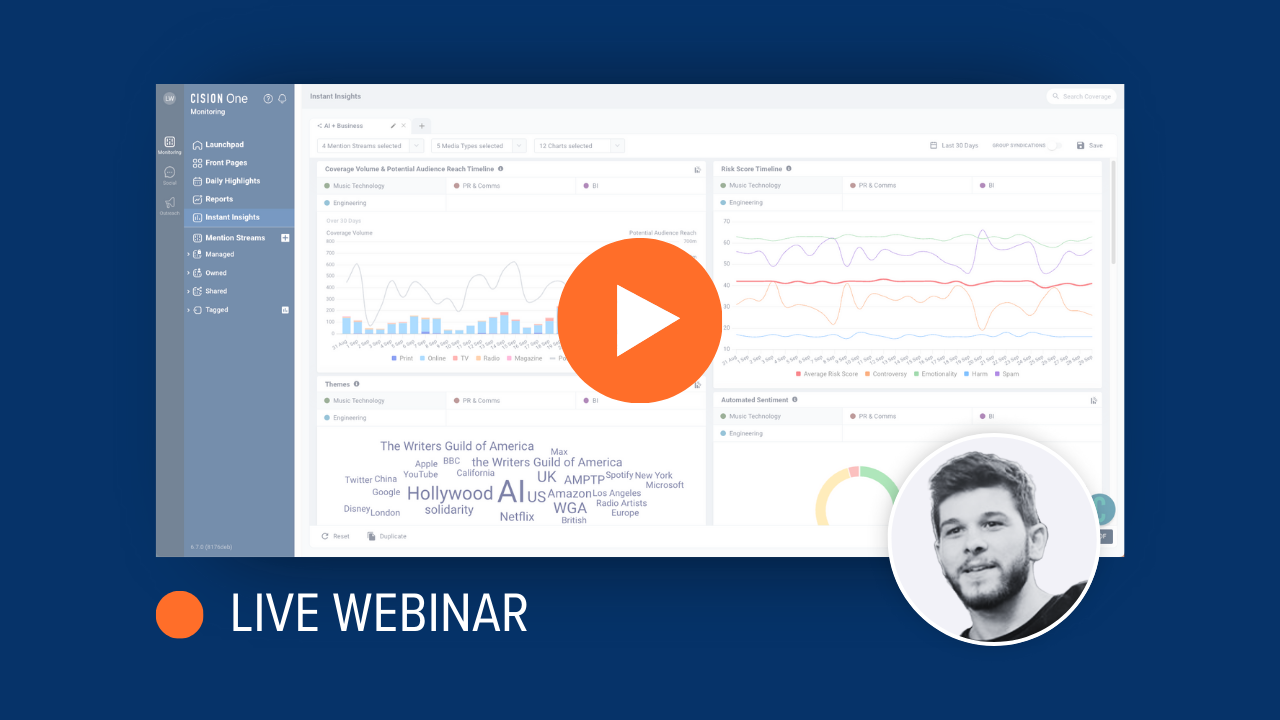
[On-Demand Webinar] The Next Generation of Media Intelligence: From Gorkana to CisionOne
Explore CisionOne, a revolutionary media intelligence platform, and the evolution of Gorkana. Learn key features and strategies from Luke Williams, CisionOne Product Marketing Manager. Elevate your media outreach to new heights!

